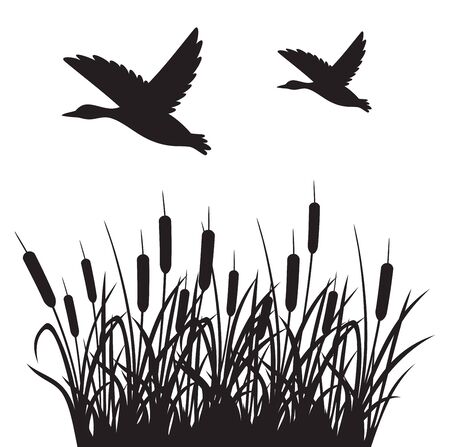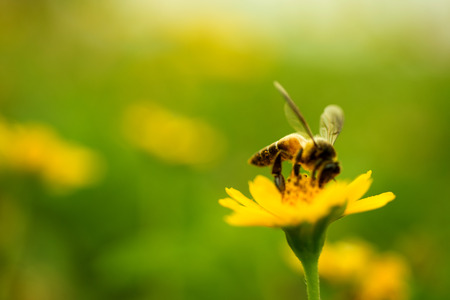Introduction to Animals in Permaculture
Permaculture is a holistic approach to designing sustainable landscapes that mimic the patterns and relationships found in nature. At its core, permaculture relies on a set of principles aimed at creating regenerative ecosystems that provide for human needs while supporting biodiversity and ecological health. One of the most powerful ways to achieve these goals is by integrating animals into the system. Animals play vital roles in nutrient cycling, pest management, soil improvement, and even energy flow within a permaculture site. By thoughtfully incorporating creatures like chickens, bees, ducks, goats, and more, practitioners can build resilient systems that are more productive and self-sustaining than those relying solely on plants. The table below provides an overview of key permaculture principles and highlights how animals contribute to each:
| Permaculture Principle | Role of Animals |
|---|---|
| Observe & Interact | Animals reveal ecosystem dynamics and help us understand resource flows. |
| Catch & Store Energy | Livestock convert plant matter into manure and food products, storing solar energy in new forms. |
| Obtain a Yield | Chickens provide eggs and meat; bees produce honey; goats offer milk and fiber. |
| Apply Self-Regulation & Accept Feedback | Animal populations adjust naturally when integrated with available resources. |
| Use & Value Diversity | Diverse animal species fulfill multiple functions—pollination, pest control, fertilization. |
| Produce No Waste | Manure and bedding become valuable compost or mulch for gardens. |
This synergy between animals and plants is central to the success of American permaculture homesteads, urban gardens, and rural farms alike. Integrating animals thoughtfully creates closed-loop systems that reduce outside inputs while enhancing resilience against pests, disease, and environmental changes.
2. Chickens: The Workhorses of the Homestead
In American permaculture gardens, chickens are more than just backyard pets—theyre essential partners in creating a thriving, self-sustaining system. Their natural behaviors make them valuable contributors to soil health, pest control, and food production, all while fitting seamlessly into the ethos of sustainability and resourcefulness celebrated across the U.S.
Soil Health Boosters
Chickens are excellent at turning over soil as they scratch for insects and seeds. This constant movement helps aerate the earth, break up compacted ground, and incorporate organic matter like fallen leaves and kitchen scraps into the soil. Their droppings are a potent source of nitrogen, which, when composted properly, enriches garden beds and supports robust plant growth.
Table: Chicken Contributions to Soil Health
| Activity | Benefit to Soil |
|---|---|
| Scratching & Foraging | Aerates soil; mixes in organic material |
| Droppings (Manure) | Adds nitrogen; improves fertility after composting |
| Composting Assistance | Accelerates decomposition of compost piles |
Pest Management Experts
American gardeners appreciate chickens for their voracious appetite for pests. Chickens eagerly consume beetles, grubs, ticks, and other common garden nuisances, reducing the need for chemical interventions. This natural pest control method aligns with organic gardening principles and helps maintain ecological balance on the homestead.
Common Pests Controlled by Chickens
- Japanese beetles
- Caterpillars
- Grasshoppers
- Ticks and fleas
- Slugs and snails
Eggs and Meat: Food Security at Home
Besides their environmental benefits, chickens provide a reliable source of fresh eggs—a staple in many American diets. Backyard eggs offer superior flavor and nutrition compared to store-bought varieties. In some homesteads, chickens are also raised for meat, further supporting local food security and reducing reliance on industrial agriculture.
Quick Facts: Chickens in American Permaculture Gardens
- Number of hens per household: Most backyard flocks range from 4–10 hens.
- Main breeds: Rhode Island Red, Plymouth Rock, Buff Orpington—chosen for hardiness and egg-laying ability.
- Sustainable practice: Rotating chicken tractors or mobile coops to spread nutrients evenly across the garden.
Integrating chickens into American permaculture not only closes nutrient loops but also builds resilience against pests and creates a dependable source of homegrown food—making these birds true workhorses of the sustainable homestead.

3. Bees: Pollinators and Beyond
Bees are essential contributors to any permaculture system, playing a pivotal role not just in pollination but also in honey production and supporting overall biodiversity. In American backyard gardens and homesteads, bees are increasingly valued for their ability to increase fruit and vegetable yields while maintaining ecosystem health. By fostering a habitat that welcomes bees, permaculturists can enjoy better harvests, richer biodiversity, and even homemade honey.
The Vital Role of Bees in Permaculture
Bees serve as primary pollinators for many crops grown in the United States, including apples, blueberries, cucumbers, and squash. Their foraging activity enables plants to produce seeds and fruit efficiently, directly impacting food supply both locally and nationally. Beyond crops, bees contribute to wild plant reproduction, which sustains native wildlife habitats.
| Bee Benefit | Permaculture Impact |
|---|---|
| Pollination | Boosts yield and quality of fruits and vegetables |
| Honey Production | Provides natural sweetener and local income source |
| Biodiversity Support | Enhances ecosystem resilience by aiding wildflower propagation |
Backyard Beekeeping: Getting Started
With growing interest in sustainable living across the U.S., backyard beekeeping is becoming a popular hobby that aligns perfectly with permaculture principles. Here are some beginner tips:
- Select the Right Hive: Langstroth hives are the most common in America for their ease of management and honey harvesting.
- Choose Bee-Friendly Plants: Plant native flowers like goldenrod, sunflowers, coneflowers, and clover to provide forage throughout the seasons.
- Water Source: Place a shallow water dish with pebbles nearby so bees can drink safely without drowning.
- Avoid Chemicals: Refrain from using pesticides or herbicides near your hive to protect bee health.
Supporting Biodiversity Through Beekeeping
Cultivating a diverse garden helps sustain bee populations year-round. Rotate flowering plants to ensure continuous blooms from spring through fall. Consider integrating wildflower meadows or hedgerows along property lines to create safe corridors for pollinators. By making your landscape inviting for bees, you’ll not only benefit your own crops but also contribute positively to broader ecological health.
4. Other Beneficial Animals: Ducks, Goats, and Rabbits
Beyond chickens and bees, American permaculture practitioners often turn to a variety of other animals to boost their systems’ productivity and resilience. Ducks, goats, and rabbits are among the most popular choices due to their diverse roles and adaptability to different climates across the U.S. Each species brings its own unique benefits to the table, making them valuable additions to any permaculture design.
Ducks: The Wetland Allies
Ducks are particularly prized for their ability to manage pests like slugs and snails without damaging garden beds. Unlike chickens, ducks rarely scratch up soil or eat vegetable plants, making them ideal for integration in gardens or around ponds. They also produce rich manure that can be composted to enhance soil fertility. In wetter regions of the U.S., such as the Pacific Northwest, ducks thrive and contribute significantly to integrated pest management.
Goats: Multifunctional Browsers
Goats are renowned for their versatility on American homesteads. As browsers rather than grazers, goats help control brush and invasive weeds while providing milk, meat, and even fiber (from certain breeds). Their manure is an excellent addition to compost piles. Goats require secure fencing but can transform underutilized land into productive areas when managed properly.
Rabbits: Silent Fertilizer Producers
Rabbits are valued in U.S. permaculture setups for their quiet nature and efficient conversion of feed into high-quality manure. Rabbit droppings are considered “cold” manure, meaning they can be applied directly to gardens without composting first. This makes rabbits an excellent choice for urban or suburban permaculturists with limited space who still want nutrient-rich fertilizer.
Comparing Animal Contributions
| Animal | Main Benefits | Ideal U.S. Settings |
|---|---|---|
| Ducks | Pest control, eggs, manure for compost | Ponds, wet climates, garden beds |
| Goats | Brush clearing, milk/meat/fiber, manure | Pasture edges, woodlands, rural homesteads |
| Rabbits | Fertilizer production, meat, quiet operation | Urban/suburban yards, small spaces |
Integrating Diverse Species for System Resilience
The inclusion of ducks, goats, and rabbits helps diversify outputs—such as food, fiber, and fertilizer—while increasing overall system stability. By understanding each animal’s ecological niche and needs within the landscape, U.S. permaculture enthusiasts can create more resilient and productive ecosystems that mimic natural processes.
5. Integrating Animals into Your Permaculture Design
Successfully integrating animals into your permaculture system requires careful planning and an understanding of each species’ unique needs and benefits. Here’s some practical advice, along with real-life examples from American gardens and homesteads, to help you create a thriving, balanced ecosystem.
Assessing Your Space and Goals
Start by evaluating your available space, climate, and what you hope to achieve. Are you looking for fresh eggs, natural pest control, honey, or manure for compost? Each animal brings something different to the table. For instance, backyard chickens are ideal for suburban lots, while goats may require more land and fencing.
Matching Animals to Permaculture Zones
| Permaculture Zone | Suitable Animals | Main Benefits |
|---|---|---|
| Zone 1 (Closest to Home) | Chickens, Rabbits | Eggs, meat, manure, pest control |
| Zone 2 | Ducks, Bees | Slug control, pollination, honey |
| Zone 3+ | Goats, Sheep | Milk, fiber, larger-scale grazing |
Design Considerations and Animal Needs
- Shelter: Provide secure coops or barns to protect animals from predators and weather.
- Rotation: Use movable pens or rotational grazing systems (like chicken tractors) to prevent overgrazing and allow land to recover.
- Integration: Position bee hives near fruit trees for optimal pollination or let ducks patrol vegetable beds for natural slug control.
Example: Suburban Backyard Chicken Integration
A family in Portland, Oregon installed a small flock of hens in their backyard. They built a coop adjacent to the garden beds and used straw bedding that was later added to the compost pile. The chickens not only provided fresh eggs but also helped manage weeds and pests by scratching through garden debris.
Example: Bee Hives in an Urban Food Forest
An urban community garden in Atlanta set up several beehives at the edge of their fruit orchard (zone 2). The bees improved pollination rates for apples and berries while producing honey that was shared among gardeners. Strategic placement ensured the bees had access to diverse forage throughout the growing season.
Tips for Success
- Research local regulations regarding livestock or beekeeping.
- Select heritage breeds adapted to your region’s climate.
- Create multi-functional habitats—ponds can support ducks as well as beneficial insects.
The thoughtful integration of animals transforms a conventional garden into a dynamic permaculture system where every element supports another—resulting in healthier soil, abundant yields, and resilient landscapes.
6. Cultural and Ethical Considerations
Integrating animals into permaculture systems in the United States goes beyond ecological benefits; it also involves thoughtful reflection on cultural norms and ethical responsibilities. Responsible animal stewardship is at the heart of American permaculture, requiring practitioners to respect animal welfare laws, community expectations, and diverse perspectives on land and animal use.
Respecting Local Values
American communities are incredibly diverse, with different attitudes toward keeping livestock or bees in residential and rural settings. While chickens may be welcomed in some suburban backyards for their eggs and pest control, other neighborhoods have strict regulations regarding noise, smell, and enclosure requirements. Bee-keeping also varies: some cities encourage urban apiaries for pollinator health, while others impose limits due to safety concerns.
| Animal | Common Regulations | Cultural Attitudes |
|---|---|---|
| Chickens | Limits on flock size, rooster bans, coop standards | Popular for eggs, sometimes contested due to noise or odor |
| Bees | Hive registration, setback rules from property lines | Valued for pollination; concerns about allergies or swarms |
Ethical Stewardship Principles
Permaculture practitioners are guided by principles that emphasize care for the earth, people, and fair share. This means providing humane treatment for animals—adequate space, proper nutrition, clean water, shelter from weather extremes, and access to natural behaviors like dust bathing or foraging. Ethical stewardship also includes responsible breeding practices and end-of-life considerations.
Key Ethical Practices in Permaculture Animal Care
- Ensuring animals have enrichment and social opportunities
- Avoiding overcrowding or confinement stress
- Managing waste to prevent environmental pollution
- Using integrated pest management instead of chemical treatments
Navigating Community Relationships
Building trust with neighbors is essential. Transparent communication about your practices—such as sharing surplus eggs or honey—can foster goodwill. Being proactive about potential nuisances (like odors or bees visiting flowers) shows respect for shared spaces and helps bridge cultural differences within the community.
Ultimately, incorporating animals into permaculture in America is not just about productivity; it’s about aligning with ethical standards and respecting local customs to create harmonious, sustainable systems that benefit both people and the land.


